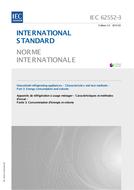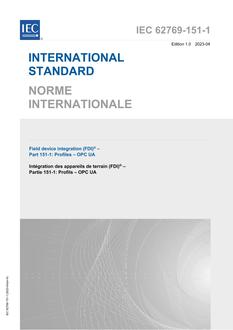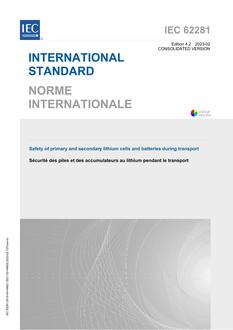
IEC 62552-3 Ed. 1.0 b:2015
Click here to purchase
IEC 62552-3:2015 specifies the essential characteristics of household and similar refrigerating appliances cooled by internal natural convection or forced air circulation, and establishes test methods for checking these characteristics. This part of IEC 62552 describes the methods for the determination of energy consumption characteristics and defines how these can be assembled to estimate energy consumption under different usage and climate conditions. This part of IEC 62552 also defines the determination of volume.
– All parts of the standard have been largely rewritten and updated to cope with new testing requirements, new product configurations, the advent of electronic product controls and computer based test-room data collection and processing equipment.
– For more efficient analysis and to better characterise the key product characteristics under different operating conditions, the test data from many of the energy tests in Part 3 (this part) is now split into components (such as steady state operation and defrost and recovery). The approach to determination of energy consumption has been completely revised, with many internal checks now included to ensure that data complying with the requirements of the standard is as accurate as possible and of high quality.
– Part 3 (this part) now provides a method to quantify each of the relevant energy components and approaches on how these can be combined to estimate energy under different conditions on the expectation that different regions will select components and weightings that are most applicable when setting both their local performance and energy efficiency criteria while using a single set of global test measurements.
– For energy consumption measurements in Part 3 (this part), no thermal mass (test packages) is included in any compartment and compartment temperatures are based on the average of air temperature sensors (compared to the temperature in the warmest test package). There are also significant differences in the position of temperature sensors in unfrozen compartments.
– The energy consumption test in Part 3 (this part) now has two specified ambient temperatures (16°C and 32°C).
– A load processing energy efficiency test has been added in Part 3 (this part).
– Tests (both performance (Part 2) and energy (Part 3 (this part)) have been added for wine storage appliances.
Product Details
- Edition:
- 1.0
- Published:
- 02/13/2015
- Number of Pages:
- 328
- File Size:
- 1 file , 4.3 MB


